UPDATED REVIEW – August 1, 2019: The Roland HP302 has been replaced by the new improved HP503. I am a very fortunate musician as I have played so many different types of digital pianos & keyboards throughout my music career, literally thousands of them. Not only have I had extensive experience with pro digital pianos & keyboards, I also have extensive experience with home and educational models of digital pianos. update: All of the digital pianos below are discontinued. Please go to the following link for the latest Roland digital pianos: Roland home digital pianos 2019 – Review
Three very nice home furniture cabinet 88-key digital pianos made by the Roland company are called the HPi6F the DP990F, and the HP305 pianos. Although these pianos are very similar to each other in a lot of ways including having well over 300 good quality instrument tones on board, using the Roland medium grade PHAII (with escapement) key action, having 128-notes of polyphony, and also incorporating a USB flash drive input for playing MIDI & WAV song files, they are also different in some interesting ways.
The HPi6F piano was built for home music education and for student learning. It plays and sounds good using Roland’s latest piano sound technology called SuperNATURAL piano. It has a color display screen built into the music rack to display a wide variety of very cool music software programs that can help a beginner piano student (or even someone who plays) the opportunity of seeing music notation and lessons visually on the screen, although the screen could be larger for that. You can then interact with those lessons by watching the music, playing along, and being “corrected” by the program itself. The screen also displays music games, and many other music related programs that make it fun to learn and can be quite entertaining. The programs on the screen move smoothly, accurately, and quickly, unlike the new Suzuki TSI-1ei music rack touch screen which is quite slow, quirky, and sometimes freezes up. Roland is always way ahead when it comes to that kind of technology.
Aside from the unique display screen with the built-in song and lesson programs along with other nice displays of music and games, the HPi6 has 60 watts total audio power with four speakers as compared to 24 watts of total audio power with 2 speakers on the new DP990F and the HP302. However here’s the real biggie that one must think about when considering these fine pianos; the HPi6F sells in piano stores at a minimum advertised discount price of $3499. That’s a lot of cash these days for a new digital piano that still uses a non-touch screen.
On the other hand, the new DP990F (pictured left) and HP503 cabinet pianos (pictured below left), which are also very similar to each other except basically for cabinet design (as you can see), have Roland’s latest piano sound technology called SuperNATURAL Piano. This new piano sound is on all 2012 Roland furniture cabinet piano models that sell for over $2000. The SuperNatural piano sound is a great improvement over previous Roland pianos
 The discount selling price of the DP990F (which comes in two different colors, cherry & black) is $2299 (with a polished ebony finish at $2999) and the discount selling price of the HP503 is approx $2499 depending on the piano store. Compare those prices with the HPi6F at approx $3499. So basically, the HPi6F offers the cool display color screen with the fun music lesson and interactive play along programs along with a better digital recorder (up to 16 tracks vs 3) and a more powerful audio & speaker system (4 speakers with 60 watts of power). But even with those nice upgrades, we’re still talking a lot more money more for the HPi6F when you could also get a good digital piano for less money and connect it to a laptop computer or iPad using the latest interactive music software. Is the color display screen, music education & notation programs, more powerful audio system, and more recording tracks really worth the extra cost?…you’ll have to decide that.
The discount selling price of the DP990F (which comes in two different colors, cherry & black) is $2299 (with a polished ebony finish at $2999) and the discount selling price of the HP503 is approx $2499 depending on the piano store. Compare those prices with the HPi6F at approx $3499. So basically, the HPi6F offers the cool display color screen with the fun music lesson and interactive play along programs along with a better digital recorder (up to 16 tracks vs 3) and a more powerful audio & speaker system (4 speakers with 60 watts of power). But even with those nice upgrades, we’re still talking a lot more money more for the HPi6F when you could also get a good digital piano for less money and connect it to a laptop computer or iPad using the latest interactive music software. Is the color display screen, music education & notation programs, more powerful audio system, and more recording tracks really worth the extra cost?…you’ll have to decide that.
By the way, in a typical home, 24-watts of power the compact Roland DP990F piano sounds OK but it should be a bit better for that price. Sixty watts of power with larger speakers (as in the HPi6F) does have a richer tone and sounds more like an upright piano. And here’s something else to consider. Eventually you will (as many people do) grow out of the HPi6F display screen and built-in educational software and want to expand as I mentioned earlier.
So here’s my advice, unless you really love the Roland HPi6F incl its new big brother the HPi7F, then get the Roland DP990F and connect it to an inexpensive laptop or iPad a get some very cool interactive music software for home practice and learning (less money and does more). Unfortunately the old HP302 (if you happen to find one) has a clunky and thumpy keyboard action when the keys are striking the keybed (underneath the keys). It’s like there is no padding underneath the keys and it’s hitting the wood bottom which makes a very loud and noticeable sound like banging your fist on a table. It’s quite annoying, at least to me. I have tried other HP302’s and they’re all the same. I would call this a design issue and therefore would not buy the piano for myself because it bothers me. And when you have headphones plugged in to play in privacy, everyone in the room or house will just hear that thumping noise all the time and it can be irritating. I’ve tried it so I know.
However, if you want to look at a lower priced alternative to these Roland pianos, then check the Casio Celviano AP620 piano (pictured left) for $1399 internet discount price. I have written about it on this blog and for the money, it is a very nice digital piano with plenty of cool features that should keep you entertained for many years. It looks great, sounds & feels good, has a fairly decent acoustic piano tone (10 of them actually with an additional 240 instrument tones), has the bigger 60 watt sound system & 16-track digital recorder just like the Roland HPi6F, and as you can see, it’s less money ($1100 less than the Roland HP302/503). And the keyboard action is noticeably quieter than the HP302. Also take a look at the new Yamaha CLP430 and also the new Kawai CE220 ($1899 internet discount price). The Kawai is a very nice instrument and I have a review of it on this blog at the link below. The CE220 even has real wood acoustic piano keys for a great feel with quiet movement as well as a large 192-note polyphony piano memory chip and that’s not available on any other digital piano under $2500. This new Kawai model is very impressive and competes very favorably with the Roland pianos, especially for its low price.
If you want more info on these and other pianos and LOWER PRICES than internet discounts, please email me at tim@azpianowholesale.com or call direct at
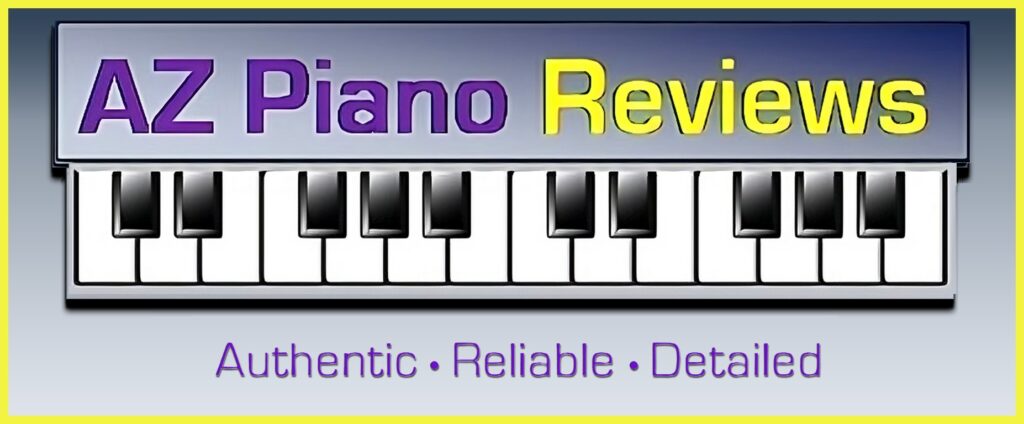




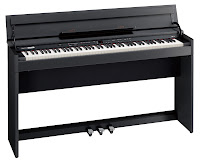




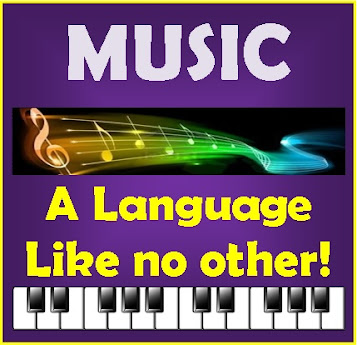
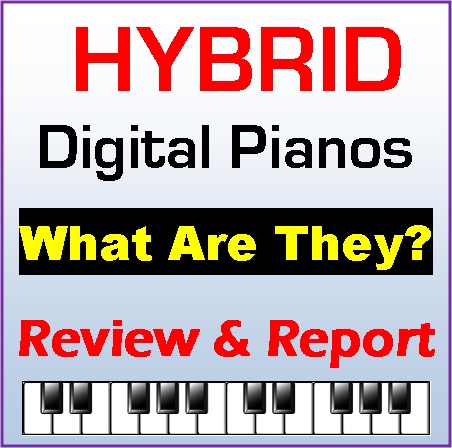
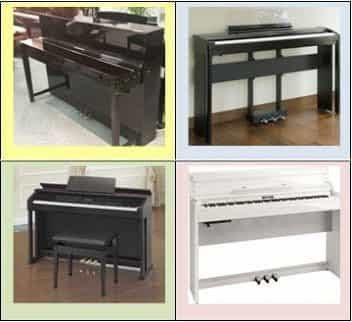
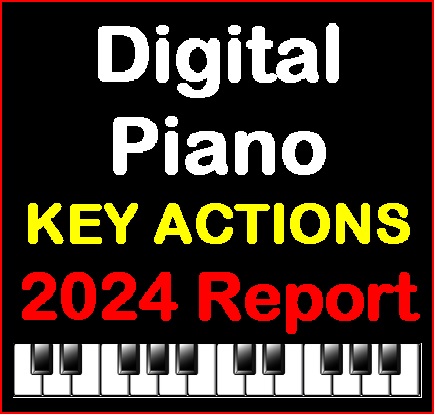
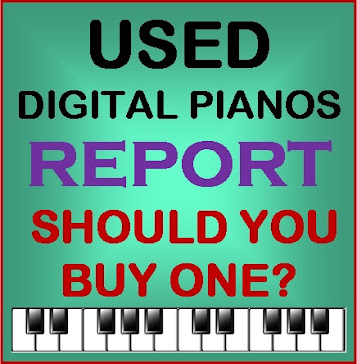
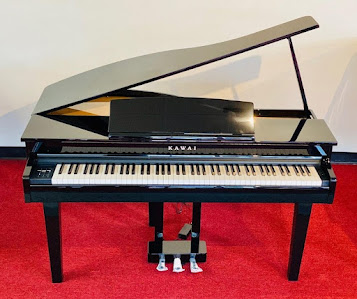
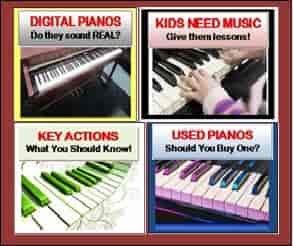
Thank you so much for the very useful and helpful reviews on pianos. I'm an avid piano player who was completely lost on what to buy for my apartment and thanks to your blog I was able to make my choice…. I went with the Roland DP-990F.